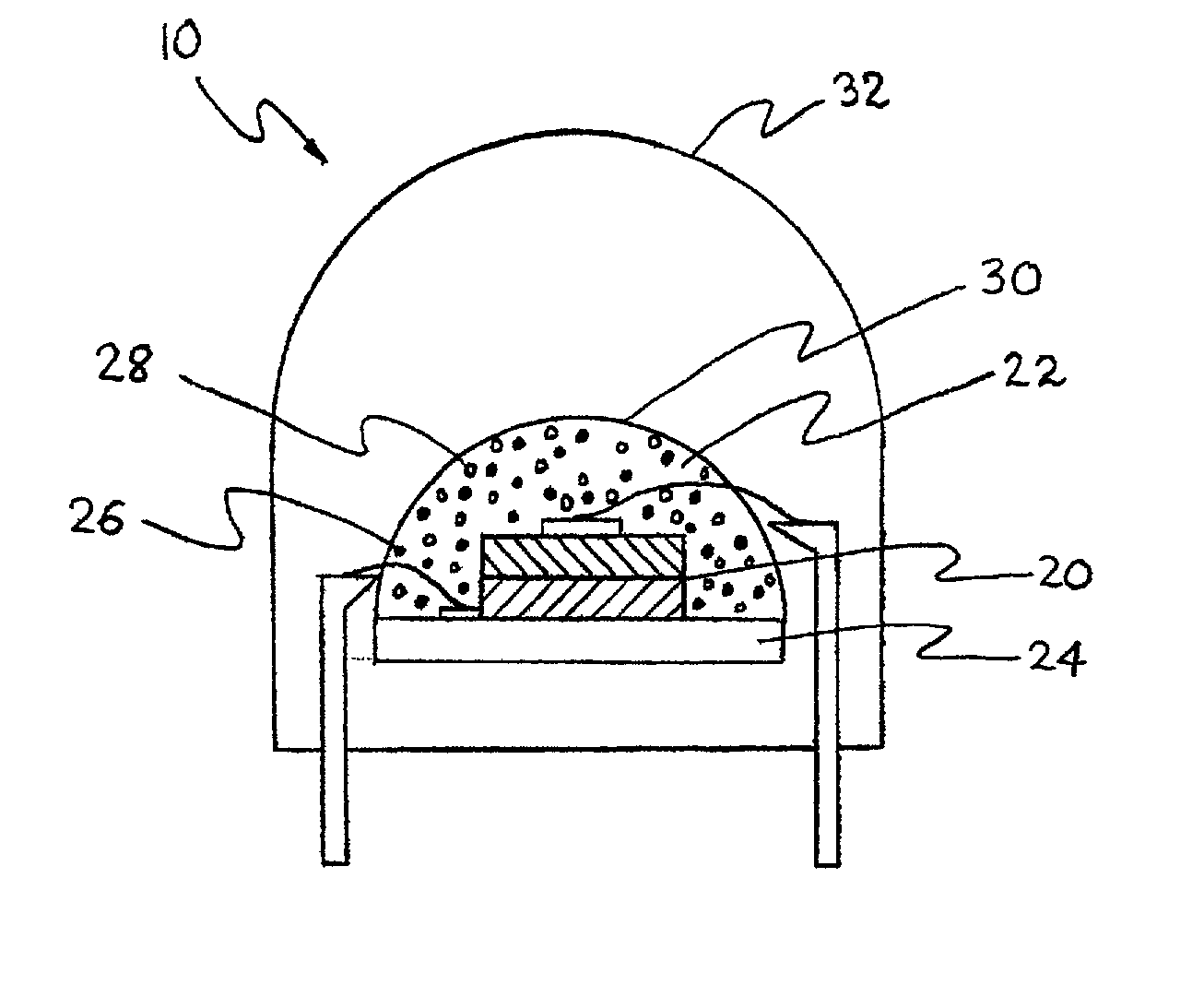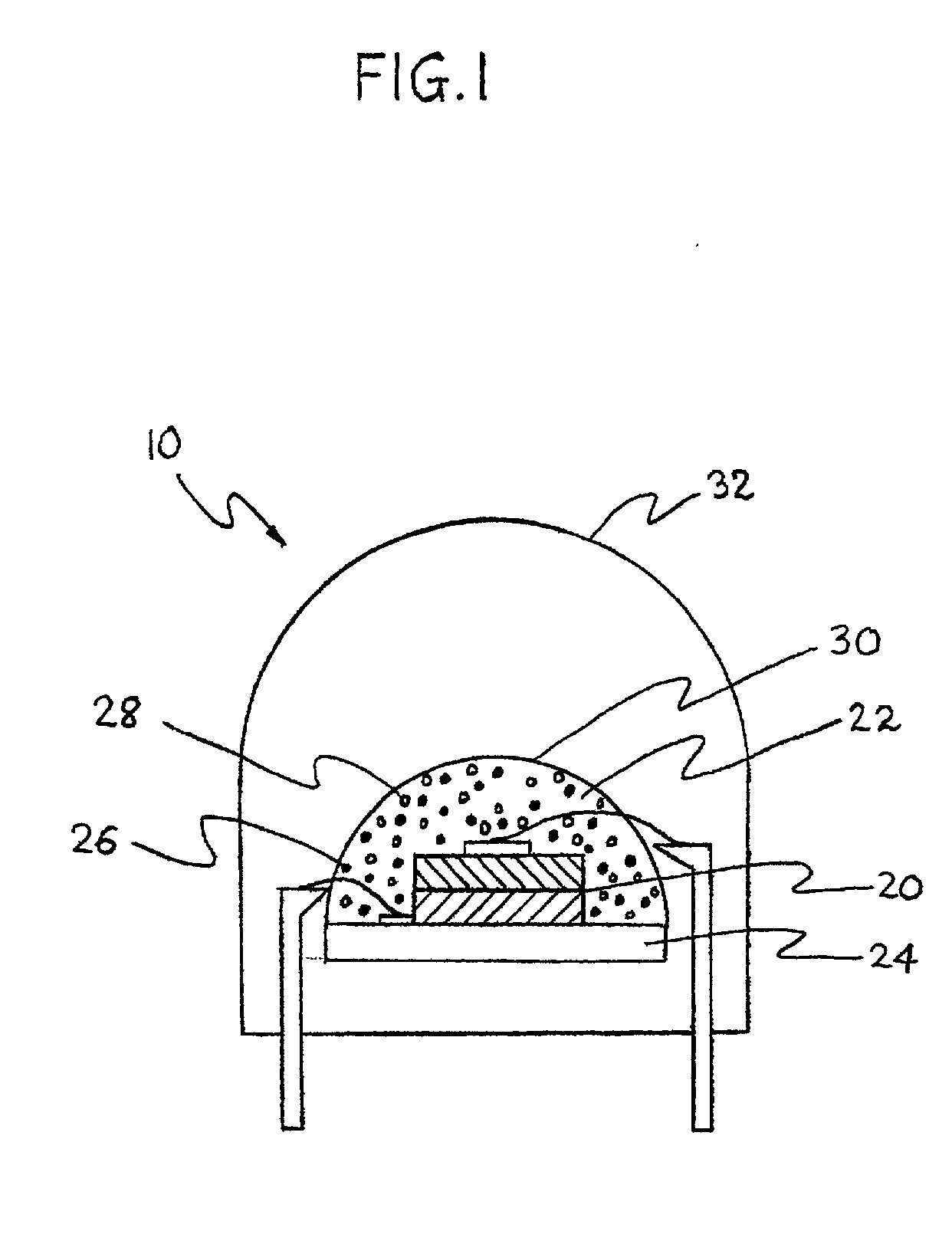UV reflectors and UV-based light sources having reduced UV radiation leakage incorporating the same
a technology of ultraviolet light and reflector, which is applied in the direction of instruments, discharge tube luminescnet screens, lighting and heating apparatus, etc., can solve the problems of reducing the uniform color and light intensity of the light, and reducing the radiation leakage of ultraviolet ligh
- Summary
- Abstract
- Description
- Claims
- Application Information
AI Technical Summary
Benefits of technology
Problems solved by technology
Method used
Image
Examples
Embodiment Construction
[0021] Visible light sources based on UV LEDs typically comprise a phosphor composition disposed adjacent to a LED to convert the UV radiation to visible light. The phosphors used in the present invention absorb UV radiation energy and reemit light having longer wavelengths, typically in the visible spectrum. The combination of the UV LED and the phosphor is typically enclosed in a substantially transparent shaped structure of a molding or casting material, such as glass, epoxy, silicone, or urea formaldehyde thermoset resin. Alternatively, the phosphor particles are often dispersed in the molding or casting material to provide a better dispersion of light. Typically, the amount of phosphor particles used is small. Therefore, there is a considerable probability for UV light to escape from the light source without being absorbed and converted by the phosphor particles. This unconverted UV radiation not only lowers the light output of the light source but also presents a safety concer...
PUM
 Login to View More
Login to View More Abstract
Description
Claims
Application Information
 Login to View More
Login to View More - R&D
- Intellectual Property
- Life Sciences
- Materials
- Tech Scout
- Unparalleled Data Quality
- Higher Quality Content
- 60% Fewer Hallucinations
Browse by: Latest US Patents, China's latest patents, Technical Efficacy Thesaurus, Application Domain, Technology Topic, Popular Technical Reports.
© 2025 PatSnap. All rights reserved.Legal|Privacy policy|Modern Slavery Act Transparency Statement|Sitemap|About US| Contact US: help@patsnap.com



